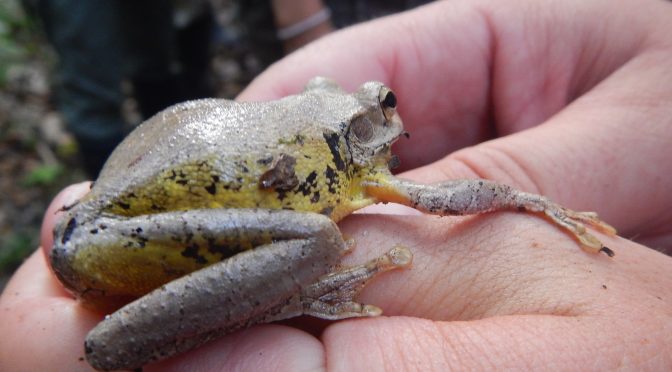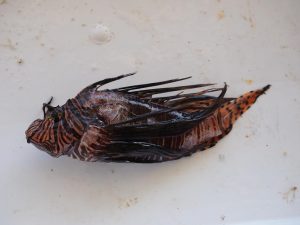I woke up today at 5:00am for birding! There were only a few birds actually flying in the clearing. However, the bird calls were so loud and beautiful! Then, we had breakfast and began planning our experiment for the day. Today, we were laying camera traps in order to test the abundance of large cats and their prey on paths and in densely forested areas.
Around 9:40am, we left for our first hike of the day! It was a pretty good hike! There were a lot of steep hills, but the downs were really fun. We got to go off trail in order to lay our camera traps. I was completely convinced the whole time that I was going to grab a vine and it would turn out to be a snake! We saw a Mexican porcupine at the top of one of the hills. I think it was sleeping in a hollowed out tree. When he heard our group, he scampered up the tree. We saw a scorpion eater snake and a few large centipedes. I also saw the Blue morpho butterflies.
After lunch, we went on our second hike of the day! We hiked the Monkey Tail trail. A few trees had fallen over in the last hurricane and were blocking the path. It was a lot of fun to scamper over them! On the hike, I didn’t see too many organisms because I was focused on the camera traps. However, we did see lots of signs of the large cats. We saw a few pieces of scat and some large cat scratches. Hopefully, we will be able to catch some on our cameras. We got slightly turned around on our way out of the forest after the last camera trap. We ended up making it out of the forest thanks to Scot and a GPS! We ended up making it back to the station after dark. When we turned on our headlamps, we could see all of the spider eyes staring back at us. There are a surprising number of spiders!
On the last hike, I finally saw a amphibian. It was a Smilisca baudinii (Mexican treefrog)! While we were handling the frog, it turned a dark brown color, and we could see the characteristic dark lines on the frog’s back and legs.


















